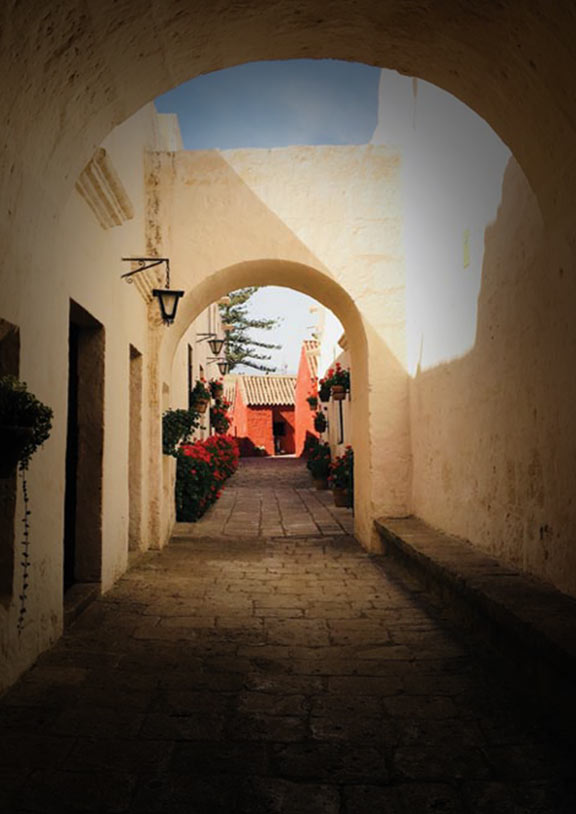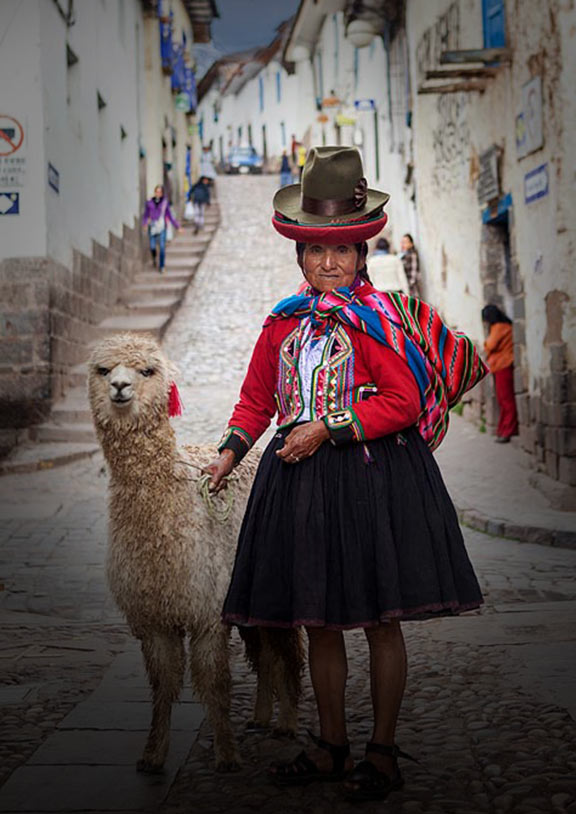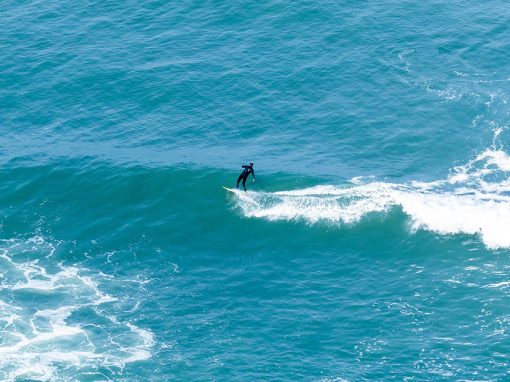You probably know Peru better for the Andes mountains that cradle Cusco and Machu Picchu and for the Amazon rainforest’s mind-blowing biodiversity. But you might be surprised to know that there are many wonderful and impressive Peru beaches that are well worth a stop on your trip. Although it doesn’t have the white sands and bath temperature waters of places like the Caribbean, Peru has an amazingly diverse and beautiful coastline.
Below you’ll find our top 20 best beaches in Peru. There’s truly something for everyone along Peru’s shores!
1. Punta Sal (Tumbes Region)
Punta Sal is Peru’s top beach when it comes to your typical beach retreat. The sun shines here nearly every day of the year, and the beaches have incredibly fine sand. The warm waters are teeming with marine life thanks to warm and cold water currents. It is the most developed in regards to accommodations and has some of the most luxurious, all-inclusive beachfront resorts in the country. From your resort, you can enjoy a number of activities from beach volleyball to kayaking, water skiing to cruising around on a yacht.

Soft sand and palm trees at Punta Sal beach. Photo by Incacity on Flickr.
Ranked for:
- Resorts
- Fine sand
- Warm water
- Relaxation
- Water sports
- Seafood
- Tourist friendly
- Marine life
2. Máncora (Piura Region)
Mancora in the last few years has seen a major transformation from a quiet fishing town to a major beach destination. Although most famous for its party scene and bohemian backpacker vibe, Mancora is becoming a global tourist attraction with a variety of activities. Travelers come from all over to enjoy the soft sand, the surf, and the seafood. There is a variety of accommodations from super cool hostels to romantic beach resorts.

Surf all day, party all night at Máncora beach. Photo by Bruno Ahlgrimm on Flickr.
Ranked for:
- Nightlife
- Fine sand
- Warm water
- Relaxation
- Surfing
- Tourist friendly
- Accommodations for all budgets
- Seafood
- Marine life
3. Playa Roja (Ica, Region)
Located in the Paracas National Reserve next to the town of Paracas, Playa Roja has the most beautiful coastal landscape of all the beaches in Peru and is well worth a visit even though you can’t swim here. Nature enjoyed playing with its primary colors with the volcanic red sand, the mustard yellow desert cliffs, and the bright blue ocean. You’ll find an incredible number of marine species, such as sea lions, dolphins, Humboldt penguins, and blue-footed boobies. In the town of Paracas, you can enjoy swimming and kayaking, tours of the Ballestas Islands, as well as more adventurous activities such as hiking, dune buggying, and ATV tours.

The yellow, red and blue coastline of Playa Roja in the Paracas Natural Reserve. Photo by Inti Runa Viajero on Flickr.
Ranked for:
- Landscapes
- Wildlife
- Turquoise water
- Resorts
- Water sports
- Adventure activities
- Easy to get to
- Archeological sites
- Seafood
- Tourist friendly
4. Huanchaco (La Libertad Region)
Huanchaco was a fishing center and port for over a thousand years for the Chimú and Moche peoples; the archeological site of Chan Chan, the largest city of pre-Columbian South America is just down the road of the beach. To this day you can still find caballitos de totora, traditional fisherman’s rafts used in the area for over 3,000 years. Not only is this area a historical treasure, but also a surf haven. In 2012, Huanchaco gained status as a World Surfing Reserve. To top it all off, researchers also believe Huanchaco to be the birthplace of ceviche, Peru’s world-famous seafood dish.

Sunset behind the pier of Huanchaco. Photo by Michael Wieck of Peru For Less.
Ranked for:
- Surfing
- Seafood
- Culture
- Archeological sites
- Relaxation
- Local feel
5. Playa de la Mina (Ica Region)
Playa de la Mina is named after an old nearby coal mine but you would no longer be able to tell given how beautiful the beach is. Located just outside of the town of Paracas, it’s easy to get to with plenty of accommodation options nearby. Because it’s within the Paracas Natural Reserve, it’s well taken care of, equipped with informational plaques and a railed path leading down to the beach. It’s one of the best swimming spots in all of Paracas with its calm, bright aquamarine water. Yet it still has an off the beaten path feel with few tourists.
Ranked for:
- Landscapes
- Wildlife
- Turquoise water
- Calm waters
- Tourist friendly
- Remote
- Resorts and hotels
- Easy to get to
6. Tuquillo (Ancash Region)
Located about 4 hours north of Lima just off the Panamerican Highway is a beautiful circuit of beaches called Tuquillo. The waters are aquamarine-colored and crystal clear, and the beaches have soft sand surrounded by picturesque rock formations. Right next to Tuquillo is a small beach called La Pocita, which is called the pool of the Pacific Ocean due to its beautiful turquoise tidepools. Tuquillo beach has also been awarded an eco-beach prize (Premio Ecoplaya) for its cleanliness and conservation.

Light turquoise tidepools at Tuquillo beach. Photo by Michael Wieck of Peru For Less.
Ranked for:
- Turquoise water
- Fine sand
- Landscapes
- Cleanliness
- Remote
7. Chicama (La Libertad Region)
The humble town of Chicama is home to the not-so-humble longest left-breaking waves in the world. Legend has it that a Hawaiian surfer saw the waves from a plane and later wrote to some Peruvian friends to help him locate it. On a good day with 6-foot-plus swells, surfers can expect to ride the wave for over a mile. The local surf resort even has a towback service so you don’t have to paddle or hike back up the beach to catch your next wave. Despite such great surf, the town remains small and unassuming with simple accommodations for surfers.

Sunset at Chicama beach. Photo by neverything on Flickr.
Ranked for:
- Surfing
- Fishing
- Relaxation
- Local feel
8. Las Pocitas (Piura Region)
Playa Las Pocitas is known as Máncora Chico, or Little Mancora. Located just down the way, it’s much more tranquil than its big, party town brother. Pools of oceanfront hotels look out onto a row of picturesque palm trees and a dark turquoise sea. You’re sure to have a peaceful stay in a lounge chair or shaded beach bed listening to the waves.
Ranked for:
- Fine sand
- Warm water
- Relaxation
- Accommodations
- Marine life
9. Cerro Azul (Lima Region)
Cerro Azul may sound familiar to all you Beach Boys fans out there. That’s because the band name drops this beach in their 1962 song “Surfin’ Safari.” Although you’ll still see surfers “angling in Laguna in Cerro Azul,” this beach also draws plenty of families looking to hang out on the shore under colorful beach umbrellas. Those looking to be more active can hike up the cerro at the end of the beach and check out the El Fraile (The Monk) rock formation. Cerro Azul is only a couple of hours drive south of Lima.
Ranked for:
- Surfing
- Cool rock formations
- Local feel
- Easy to get to
10. Cabo Blanco (Piura Region)
“He always thought of the sea as ‘la mar’ which is what people call her in Spanish when they love her.” Cabo Blanco was already well known in the 1950s and 60s for incredible sport fishing, luring the likes of Ernest Hemingway who later made it the setting of his novel The Old Man and the Sea. Nowadays you won’t find the giant marlin of those decades, but the beach has become an international destination for surfers drawn to its powerful left surf break.
Ranked for:
- Surfing
- Seafood
- Warm water
- Fine sand
- Relaxation
- Local feel
- Marine life
11. Camaná (Arequipa Region)
Camaná is the most popular beach for Arequipeños, or residents of the city of Arequipa, and for good reason. It is considered the cleanest beach in all of Peru and has calm waters perfect for relaxing and splashing around. Here you’ll find some phenomenal seafood, including the typical arequipeño dish chupe de camarones, an intensely flavorful shrimp soup. There are also some neat archeological sites nearby, including the pre-Inca cemetery Cerro Mil Hojas and the Quilca petroglyphs.
Ranked for:
- Calm waters
- Cleanliness
- Seafood
- Archeological sites
12. Vichayito (Piura Region)
Vichayito is another chill little beach south of Mancora. During the summer season, it’s the perfect swimming spot since its shores are virtually rockless. And during the off-season when the winds pick up it transforms into a kite and windsurfing hot spot. In between surf sessions, you can relax while sunbathing or in a lounge chair under an aesthetic straw beach umbrella.

Palm trees, fine sand, and warm waters of Vichayito. Photo from Wikimedia Commons.
Ranked for:
- Fine sand
- Warm water
- Relaxation
- Water sports
- Seafood
- Marine life
13. Asia (Lima Region)
Asia is one of the most frequented Lima beaches for weekend getaways from the city, at only an hour’s drive south. Many limeños, or Lima residents, have summer homes there or rent for a weekend or even a week or two for summer vacation. The beaches have been heavily developed so that there is truly something for everyone. You can hang out at the beach, go shopping at one of the many malls and boutiques, dine at nice restaurants, go to the movies, party at fancy clubs, or even go golfing. Be aware that the water is pretty chilly here so mixing up your activities is probably the way to go.
Ranked for:
- Modern
- Nightlife
- Restaurants
- Golfing
- Shopping
- Easy to get to
- Fancy beach rentals
14. Los Órganos (Piura Region)
Los Órganos is an up-and-coming tourist beach for those looking for nice sand and tranquility. You can grab yourself a private little beachfront bungalow surrounded by palm trees and enjoy some sand and sun all year round. There are also a few surf points for those who want to earn their downtime. The town may not have much going on, but it will cover your basic necessities for places to stay, food, and banks.

Sunset at Los Órganos. Photo by neil on Flickr.
Ranked for:
- Fine sand
- Warm water
- Surfing
- Relaxation
- Local feel
15. Costa Verde (Lima Region)
The best place to look out over the ocean and catch the sunset in Lima is the Malecón, a park that runs along the city’s cliffside. However, if you’re looking to get up close and personal with the Pacific waves, you can venture down to the beach below. The Costa Verde beaches aren’t much to look at and parts are very rocky, but there are some incredible spots for surfing. The beaches in Miraflores and Barranco both have shopping centers and restaurants, including Rosa Nautica at the end of a pier. There is also the Chorrillos district with its local fish market, colorful little fishing boats, and pelicans waiting for fishermen to drop some of their catch.
Ranked for:
- Surfing
- Restaurants
- Shopping
- Accommodations for all budgets
- Easy to get to
- History
- Culture
16. Pimentel (Lambayeque Region)
Just seven miles away from the city of Chiclayo, Pimentel is a modern beach with plenty of convenient infrastructure for tourists. In the 1920s, it was a major port town and the end of a railway line for sugar production and shipping, the remnants of which you can still see on the pier. You can walk along the boardwalk, enjoy ceviche at a beachfront restaurant, and even take a ride on a caballito de totora, a traditional pre-Columbian fishing raft.

Yellow beach umbrellas dotting Playa Pimentel. Photo by Inti Runa Viajero on Flickr.
Ranked for:
- Seafood
- Tourist friendly
- Culture
- History
- Surfing
17. Zorritos (Tumbes Region)
Zorritos first became a popular beach for the aristocracy from the nearby city of Tumbes during an oil boom off its shore. Although the oil business there is no more, visitors can still see the perforation platforms way out in the water. The beach is now frequented mostly by locals as well as some tourists, with a handful of nice little hotels and restaurants in the area. You can even take a scuba diving tour around the oil platforms to see how the structures have been taken over by marine life.

Sunset at Los Zorritos in Northern Peru. Photo by José Luis Zapata Ruiz on Flickr.
Ranked for:
- Fine sand
- Warm water
- Relaxation
- Local feel
- Marine life
18. Lobitos (Piura Region)
Lobitos once was a happening port town, welcoming cruise ships from Europe, as well as serving as a military base. Today, in comparison to nearby Mancora and Cabo Blanco, Lobitos looks a bit derelict with its abandoned buildings and sparsely populated beach. However, this is a prime spot for surfers. The space is much more open for swells than Mancora and Cabo Blanco so you’ll have a lot more waves to ride, especially if you’re looking for left handed ones.
Ranked for:
- Surfing
- Fine sand
- Warm water
- Local feel
- Marine life
19. Punta Hermosa (Lima Region)
Punta Hermosa is on its way to becoming a newer version of Asia. The beaches here have been developed in recent years to have many of the same luxuries, such as accommodations, restaurants, and nightclubs. Although still not quite as ritzy as Asia, it’s at least a more affordable option for a beach weekend. Plus, it’s closer to Lima at only a half-hour drive (depending on traffic) south of the city.

Punta Hermosa is a popular beach for Lima residents because of its proximity to the capital. Photo by Michael Wieck of Peru For Less.
Ranked for:
- Modern
- Nightlife
- Restaurants
- Easy to get to
- Accommodations for all budgets
20. La Punta (Callao Region)
Callao is known as a very industrial city just north of Lima. This is where you’ll find the airport as well as the port where both shipments and cruise ships come in. However, there is a unique little spot right at the tip of the city, conveniently called La Punta, in one of the few ritzy neighbors. Instead of sand, it is completely covered with smoothed stones the size of your palm. It may take a few minutes to get yourself settled, but once you do you get to enjoy a hot massage stone-type bed. You can also watch the sunset from a retro-looking glass viewpoint or visit the historical Real Felipe Fortress.

Observatory looking out towards Isla San Lorenzo in the distance. Photo by MI PERÚ on Flickr.
Ranked for:
- Unique smoothed stones
- History
- Modern
- Easy to get to
As you can see, there is a lot more to Peru than just Cusco and Machu Picchu—Peru has quite a variety of beaches, too! Although both locations are unique in and of themselves, Peru’s desert coastline also has a lot to offer to travelers. Catch some waves, dig into some fresh seafood, observe marine life, explore ancient ruins, and dance the night away. There’s so much more waiting for you besides lazy beach days—although you can definitely do that, too!
Not sure how to fit a beach trip into your Peru itinerary? Ask us how!

A love of foreign languages brought Rachel diving headfirst into that expat life. She has spent the last few years living in Peru, exploring both touristy and off-the-beaten-path destinations throughout the country. Some of her favorite things to do in Peru are hiking, visiting museums, and trying veggie-friendly versions of typical Peruvian dishes.









